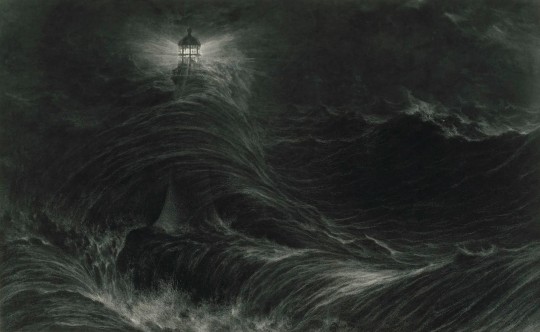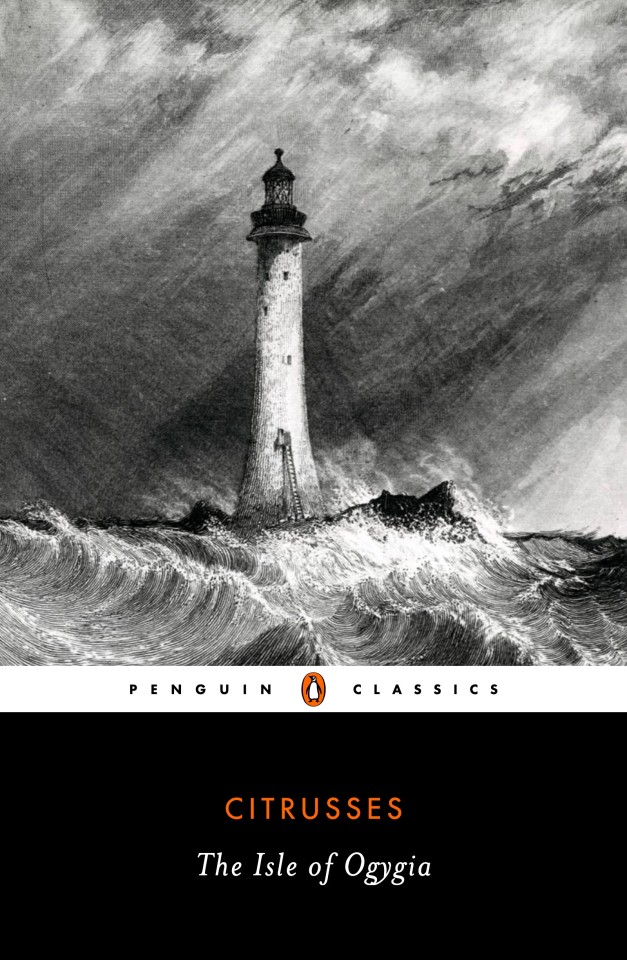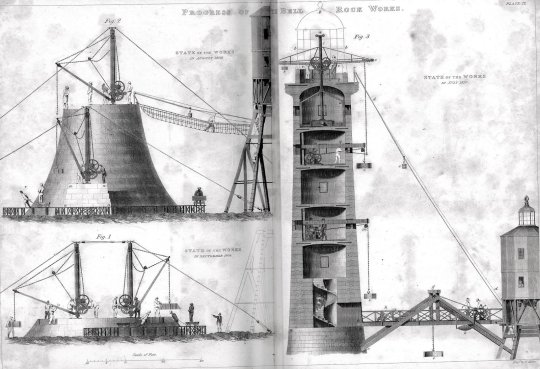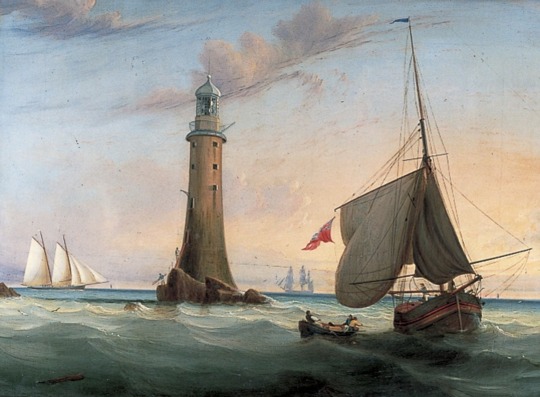#eddystone lighthouse in a storm
Explore tagged Tumblr posts
Text

#art#etching engraving#british art#lighthouse#eddystone lighthouse in a storm#19th century british art#william daniell
529 notes
·
View notes
Text


The Isle of Ogygia by citrusses on AO3
There is an island, far out in the sea.
It’s useless to fight Potter. Isn’t that the lesson he’s refused to learn his entire life? // “Harry,” he says, as instructed, the word another link in the chain he’s binding himself with. // Potter comes back the next month, as reliable as the tides. Draco starves for him when he’s not there. // But Harry is also clearly a walking disaster and would apparently rather be kidnapped than face the mess he’s made of his life, so if Draco wants to spend the next four years eating Harry’s pancakes and fucking Harry until he can’t walk, he needs Harry to get his head right. // “There’s still a chance we could starve to death,” says Draco. “A bad enough storm could come in and–” “Then we’ll starve,” Harry says, smiling at him, and Draco gives up, because he’s finally learned his lesson about fighting Harry Potter.
A perfect little miracle of a story, almost fairytale-like in its rhythms, setting, and concision — though I don't know any fairytales featuring a protagonist quite as petulant, arseholey, or delightfully unfiltered (in the narration) as this Draco. Its real triumph might be the world-building, though, which is accomplished swiftly, elegantly, and uniquely — creating an expansion to the magic of the HP universe and portkeys that I will be thinking about for a long while. The dynamic is lovely as well: an easy relationship, that still honors the fact that these are two broken boys in need of saving. The smut is very good, too, as is the ust.
Art:
(1) A Fisherman's Bedroom, Christen Dalsgaard, 1853
(2) Eddystone Lighthouse, Clarkson Frederick Stanfield, print made by W.B. Cooke, 1836
[template]
#citrusses#the isle of ogygia#fic rec#drarry#fic cover#drarry fic rec#drarry fic recs#draco x harry#hpdm#draco malfoy#harry potter#fanfic cover#harry potter fanfiction#book cover#harry potter fic rec#mustelid covers#hp fic rec
114 notes
·
View notes
Text

The Eddystone Lighthouse, during a Storm (William Daniell, 1825)
120 notes
·
View notes
Text



The Bell Rock Lighthouse, off the coast of Angus, was first lit on the 1st of February 1811.
Over 200 years after it was first built, the Bell Rock Lighthouse still stands - proudly flashing its warning light. Eleven miles out to sea off the east coast of Scotland, it is a remarkable sight - a white stone tower over 30m (100ft) high, rising seemingly without support out of the North Sea.
In fact, it is precariously poised on a treacherous sandstone reef, which, except at low tides, lies submerged just beneath the waves.
The treacherous reef on which it stands is in the North Sea, between the Firths of Forth and Tay, some 12 miles south of Arbroath and 14 miles south east of St Andrews. The red sandstone outcrop is 435m long and the lighthouse is founded on the main section, 130m long and 70m wide, and only 1.2m above the surface at low water spring tide.
The reef was known originally as Inchcape Rock or Cape Rock. According to tradition, in the 14th century the Abbot of Aberbrothok (Arbroath) placed a floating bell on it to warn mariners, hence its present name. Legend has it that sometime later a Dutch pirate removed the bell but he was later shipwrecked and perished on the same reef. The rocks were dangerous to ships sailing along the east coast of Scotland and by the end of the 18th century the need for a lighthouse was clear.
A severe storm in December 1799, in which about 70 vessels were wrecked, prompted Stevenson to propose a beacon-style lighthouse on six cast iron pillars.
Stevenson submitted a scale model of his idea to the Northern Lighthouse Board in summer 1800 — accurate physical modelling was to become something he often employed subsequently on important projects.
Stevenson drew the inspiration for his lighthouse design from the Eddystone Lighthouse, off the coast of Cornwall.
Built 50 years earlier by John Smeaton, this was a milestone in lighthouse design. Shaped with the now classic wide base, tapering to a narrow tower (Smeaton had modelled it on an oak tree he had witnessed defying a storm), it was the only off-shore structure that had until then managed to survive for any length of time against the constant battering of the seas.
Stevenson elaborated on this design. His lighthouse would have to be higher, over 30m (100ft), if it was to survive the cruel waves of the North Sea. He also incorporated more efficient reflectors, using the latest oil lighting technology, which would make his beacon the brightest yet seen.
But the Northern Lighthouse Board rejected the plan outright; in their eyes Stevenson was attempting the impossible, and besides, it was going to cost the huge sum of £42,685 and 8 shillings.
The rock had to claim another victim before the Board revisited Stevenson's plans. In 1804 the huge 64-gun HMS York was ripped apart on the rock, with the loss of all 491 crew. The NLB could delay no longer. Britain's most eminent engineer, John Rennie, was invited to give his advice.
Rennie had never actually built a lighthouse, but the Board was so impressed by his record that he was given the job of chief engineer. Robert Stevenson was to work as his resident engineer.
History does not record Stevenson's reaction to the news, but it must have come as a bitter blow to this ambitious young man. What history does record is that the structure on Bell Rock came to be known not as Rennie's but as Stevenson's Lighthouse.
Work started in 1807 and what followed was a four-year epic, with work severely restricted by tides that on occasion submerged the rock’s surface to twelve feet. The offshore activity only proceed during the summer months, and even then only with difficulty. Poor weather in the summer of 1808 allowed only 80 hours of work were completed.
To avoid time lost in shuttling workers to and fro Stevenson built a temporary wooden “Beacon House” on the rock and this served as both a base of operations and living quarters for fifteen men. As this structure (see illustrations) was also exposed to storms during the construction period, residence on it must have in itself have been a nightmare. During the winter months Stevenson kept his crews busy ashore, dressing the individual granite blocks needed for the tower. The total number required was some 2500 and all were drawn to the dockside by one of the unsung heroes of the project, a horse called Bassey.
The lighthouse came into service in 1810 and was to fulfil its purpose very effectively. Between then and 1914 only a single ship was lost on the rock, a steamer called the Rosecraig that ran aground during a fog in 1908, fortunately without loss of life.
The light has now operated for 212 years and has undergone many significant and ingenious upgrades and changes, some of them even being undertaken by non-Stevenson engineers. It was a manned light for 177 years, the lives of those keepers on their temporary Alcatraz being a source of equal fascination
The lighthouse was manned until 1988, when the station turned automatic and the last men were withdrawn.
55 notes
·
View notes
Text

The Eddystone Lighthouse in a Storm at Night, with Shipping
1813
JMW Turner
85 notes
·
View notes
Text

The Eddystone Lighthouse in a Storm at Night, with Shipping 1813 JMW Turner
15 notes
·
View notes
Text
This would be Smeaton's lighthouse, the third lighthouse to be built on the Eddystone rocks.
The first was Winstanley's lighthouse, built by Henry Winstanley starting in 1696 and first lit in 1698. "Winstanley was recorded as having expressed great faith in his construction, wishing he might be inside it during 'the greatest storm there ever was'." His lighthouse lasted five years before being completely washed away in the Great Storm of 1703, taking Winstanley with it, as he had been at the lighthouse making further additions.
The second was Rudyard's lighthouse, commissioned by Captain John Lovett and built by John Rudyard, who worked with shipwrights to design a more sensible structure than Winstanley's fanciful design. Rudyard's lighthouse was lit in 1708 and outlasted both Lovett and Rudyard, eventually burning down in 1755.
Then we come to Smeaton's lighthouse, and it was a beast. It was built by John Smeaton, a civil engineer, and first lit in 1759. Rather than simply building on top of the Eddystone rocks, he had the top of the rock cut into a proper foundation. He designed a pattern of interlocking stone blocks and then cemented them with "hydraulic lime", a special kind of cement that would cure underwater. And finally, rather than a straight-sided dodecahedron or a simple conical design like the first and second towers respectively, Smeaton designed his tower to be a tapering cylinder, modeling it after the shape of an oak tree's trunk.
Smeaton's design was so successful that even the pounding waves and storms couldn't shake the stone blocks apart or dislodge them from the foundation cut into the Eddystone rocks. What the waves and storms could do, however, was dislodge the Eddystone rocks themselves, eroding them and causing the entire tower and rock it was built on to shake from side to side when hit by particularly large waves.
Smeaton's lighthouse was the first to be replaced without being destroyed. It remained in place and operational during the construction of the fourth tower, designed by James Douglass, who used a cofferdam to construct an entirely new foundation on a separate rock that is mostly submerged. Douglass's lighthouse was built from 1878 to 1881, and used a design that relied greatly on innovations made by Smeaton more than a century earlier; in many respects, Douglass's lighthouse is just the big brother of Smeaton's. Once Douglass's lighthouse was lit in 1882, Smeaton's lighthouse could be dismantled using the same seacrane they had used to construct the new tower.
But despite being dismantled, Smeaton's lighthouse remains standing to this day... in two places, actually! The top ~2/3 of the lighthouse was reassembled piece by piece on a replica base at Plymouth Hoe, where it remains a tourist attraction to this day. But what of the bottom ~1/3? Turns out Smeaton was too good at his job. The interlocking blocks and hydraulic lime were actually too difficult to disassemble without resorting to extreme measures like dynamite, and so the stub of the tower remains on the Eddystone rocks to this day, in the shadow of the current lighthouse, which itself has been automated and had a helipad built on the roof.

youtube

The Eddystone lighthouse, by German School, 19th century
384 notes
·
View notes
Photo




Today I met up with my Mum and Daughter for Brunch and a trip to our local Museum Random Ceramics found around Plymouth, UK Jane Austen by T. Martine Ronaldson, Plymouth, UK The Eddystone Lighthouse (During the Great Storm of November 1824) by W Daniell, Plymouth, UK MMXXII By Courtesy of Anthony Wilkinson Gallery, London
21 notes
·
View notes
Text
Eddystone
They built the first house out of wood. Octagonal, like the columns that rise from the Giant's Causeway, veterans of countless battles with the waves. They built it on a small outcrop of rocks, and they lit a beacon for the world to see. Sixty candles, and a great hanging lamp which burnt through the night.
The Channel was besieged by more than waves, but war did not concern this new castle of light. When a French privateer captured its architect and disrupted his work, his King ordered his release so that he could continue. "We are at war with England," he reminded. "Not with humanity."
But storms recognise no king, and wage war with all who stand in their way. Little light, the winds called in the dark. Little light, let me in. It was a cyclone, the death of thousands, up-rooter of oaks, toppler of chimney stacks. But the wooden tower held firm, resolute, its creator expanding it in defiance. Then I'll huff, and I'll puff, and I'll blow your house down.
When the storm subsided, no trace of the lighthouse remained. Its creator, and all souls aboard, were forever lost at sea.
They built the second house to last. A smooth cone, like a lance against the sky, offering no resistance to the wind and waves that rose to break it down. It was anchored with iron bolts, and built with layers of stone and wood, wood and stone, an armoured sheath to keep it safe. Twenty four candles.
Little light, let me in. The storm was kept at bay. I'll huff, and I'll puff, but for fifty years, the tower stood against the dark. For fifty years, its fires burned their warning to the ships passing in the night. The waves drew back. The wind fell quiet. Then, fifty years on, another beacon caught light. Even the darkness beat its strategic retreat, and the candles burnt more than ever before: enough to set the whole tower ablaze.
The keepers rushed out to the sea, and threw water upwards from a bucket. They begged, then: for a wave, a gust, a cyclone. Please huff. Please puff. Please snuff out their light, the salvation of others, now become their destruction. But the storm was not forthcoming. Little light, it called, fanning the flames. That's right. Blow your house down.
They built the third house out of stone. Its design was modelled on an oak tree, but crafted from none of its flammable timber. Nor was it as light, for the cyclone had ripped four thousand oaks from the New Forest. This was a tower of stone, hewn from Cornish granite, with limestone masonry and marble dowels. This was a tower made to endure fire and water both.
It did so for a century. The third tower stood for light against darkness, for perseverance against all odds, and it stood for a hundred years. Night after night, wave after wave, huff after puff, it refused to blow down. The storm had to grow creative. The tower's armour was robust, but all castles have to rest on their foundations, and the rocky ledge could be eroded.
It took a siege of many years, but night after night, wave after wave, the war of attrition won. The tower had to be removed: failed by the very rocks that it had warned so many others of, never expecting to fall victim to their treachery itself. But despite it all, the tower didn't fall. Instead, it was moved inland, where it remains standing to this day. A monument to its creator, and to all lights that burn against the dangers of the dark. Not a victory for England. A victory for humanity.
2 notes
·
View notes
Photo

321st Anniversary of the First Lighting of Eddystone Lighthouse
Situated near the mouth of the English channel, the Eddystone reef is among the world’s most hazardous stretches of water, infamously known for causing numerous shipwrecks over the years. Today’s Doodle celebrates the first lighting of Eddystone Lighthouse, the first lighthouse built on those infamous rocks on this day in 1698.
It was English merchant Henry Winstanley, who’d invested in ships that sunk at Eddystone, who accepted the daunting challenge of building a much-needed lighthouse essentially in the wide open sea, 14 miles from the coast of Plymouth.
Work began in 1696 but was delayed when a French vessel arrived and took Winstanley prisoner. Although England and France were at war, the French king Louis XIV released Winstanley, saying that “France was at war with England, not with humanity." It was clear that the importance of the lighthouse transcended international conflicts.
Rising some 80 feet above the rock, the Eddystone Lighthouse was surmounted by a weather vane and domed cupola containing 60 candles and a “great hanging lamp” to warn navigators to steer clear of danger. Requiring extensive repairs after withstanding its first punishing North Atlantic winter, the lighthouse was substantially redesigned before its official completion in 1699.
Although Winstanley believed that the lighthouse could withstand "the greatest storm that ever was," it was destroyed during the historic Great Storm of 1703. Nevertheless, Winstanley had proved it was not just necessary but also possible and vitally important to build a lighthouse on this treacherous site, despite the extreme difficulties and dangers. A series of lighthouses have been erected in the same place since then, all of them safeguarding the lives of maritime travelers for more than three centuries.
69 notes
·
View notes
Note
do a "lighthouse" poem
HenryWinstanley, briefly kidnapped by pirates,resumed his work on the Eddystone Lighthouseso tallow-bright with faith in his creationhe wished that he could see how it outmatched the sea.White-topped waves in ranks like cavalry came to storm the Cornish granite towersthe iron stanchions, and pillage the inventor’s life, and cast him anonymously beneath the reef.Amphibious Poseidon shook the shores of Alexandriaand made the lighthouse its submerged mirror imagevisible only to men already drowned,and curious fish wondering at the severe warning it gave themagainst the reefs they flirted in and out of. The warning bell the abbot of the Bell Rock hunglasted a year before it was carried off by thieves. Against the error and confusion of the world we set up lighthousesflashing their official, Snopes-checked white and redwhile wreckers’ lanterns huddle round like firefliesand rising on the morning mist come streams of fog.
11 notes
·
View notes
Photo

Joseph Mallord William Turner - The Eddystone Lighthouse in a Storm by a Full Moon (Vale of Heathfield Sketchbook) (1813)
6 notes
·
View notes
Text

South ELEVATION of WINSTANLEY'S LIGHTHOUSE, upon the EDYSTONE ROCK, As it was finished in the year 1699. Drawn Orthographicaly from a Perspective Print thereof, Published by himself Engraved by [illegible] Roberts 1762
The original Eddystone Lighthouse, designed by Henry Winstanley in the late 17th century.
Eddystone was the earliest recorded off-shore lighthouse, built on the Eddystone Rocks, a reef South-West of the Plymouth Sound.
During construction, Winstanley was taken prisoner by a French privateer and brought to France. When Louis XIV heard of this, he ordered for Winstanley to be released, saying "France is at war with England, not humanity."
The lighthouse lasted about 5 years from being lit before it was destroyed irreparably by a storm, taking Winstanley and five other men with it. Several other lighthouses have been built in its place since then; the current one has been in operation since 1882 and was automated in 1982. It is still in use today.
Read more on Wikipedia or the Trinity House website.
1 note
·
View note
Photo




The Bell Rock Lighthouse, off the coast of Angus, was first lit on the 1st of February 1811.
Over 200 years after it was first built, the Bell Rock Lighthouse still stands - proudly flashing its warning light. Eleven miles out to sea off the east coast of Scotland, it is a remarkable sight - a white stone tower over 30m (100ft) high, rising seemingly without support out of the North Sea.
In fact, it is precariously poised on a treacherous sandstone reef, which, except at low tides, lies submerged just beneath the waves.
The treacherous reef on which it stands is in the North Sea, between the Firths of Forth and Tay, some 12 miles south of Arbroath and 14 miles south east of St Andrews. The red sandstone outcrop is 435m long and the lighthouse is founded on the main section, 130m long and 70m wide, and only 1.2m above the surface at low water spring tide.
The reef was known originally as Inchcape Rock or Cape Rock. According to tradition, in the 14th century the Abbot of Aberbrothok (Arbroath) placed a floating bell on it to warn mariners, hence its present name. Legend has it that sometime later a Dutch pirate removed the bell but he was later shipwrecked and perished on the same reef. The rocks were dangerous to ships sailing along the east coast of Scotland and by the end of the 18th century the need for a lighthouse was clear.
A severe storm in December 1799, in which about 70 vessels were wrecked, prompted Stevenson to propose a beacon-style lighthouse on six cast iron pillars.
Stevenson submitted a scale model of his idea to the Northern Lighthouse Board in summer 1800 — accurate physical modelling was to become something he often employed subsequently on important projects.
Stevenson drew the inspiration for his lighthouse design from the Eddystone Lighthouse, off the coast of Cornwall.
Built 50 years earlier by John Smeaton, this was a milestone in lighthouse design. Shaped with the now classic wide base, tapering to a narrow tower (Smeaton had modelled it on an oak tree he had witnessed defying a storm), it was the only off-shore structure that had until then managed to survive for any length of time against the constant battering of the seas.
Stevenson elaborated on this design. His lighthouse would have to be higher, over 30m (100ft), if it was to survive the cruel waves of the North Sea. He also incorporated more efficient reflectors, using the latest oil lighting technology, which would make his beacon the brightest yet seen.
But the Northern Lighthouse Board rejected the plan outright; in their eyes Stevenson was attempting the impossible, and besides, it was going to cost the huge sum of £42,685 and 8 shillings.
The rock had to claim another victim before the Board revisited Stevenson's plans. In 1804 the huge 64-gun HMS York was ripped apart on the rock, with the loss of all 491 crew. The NLB could delay no longer. Britain's most eminent engineer, John Rennie, was invited to give his advice.
Rennie had never actually built a lighthouse, but the Board was so impressed by his record that he was given the job of chief engineer. Robert Stevenson was to work as his resident engineer.
History does not record Stevenson's reaction to the news, but it must have come as a bitter blow to this ambitious young man. What history does record is that the structure on Bell Rock came to be known not as Rennie's but as Stevenson's Lighthouse.
Work started in 1807 and what followed was a four-year epic, with work severely restricted by tides that on occasion submerged the rock’s surface to twelve feet. The offshore activity only proceed during the summer months, and even then only with difficulty. Poor weather in the summer of 1808 allowed only 80 hours of work were completed.
To avoid time lost in shuttling workers to and fro Stevenson built a temporary wooden “Beacon House” on the rock and this served as both a base of operations and living quarters for fifteen men. As this structure (see illustrations) was also exposed to storms during the construction period, residence on it must have in itself have been a nightmare. During the winter months Stevenson kept his crews busy ashore, dressing the individual granite blocks needed for the tower. The total number required was some 2500 and all were drawn to the dockside by one of the unsung heroes of the project, a horse called Bassey.
The lighthouse came into service in 1810 and was to fulfil its purpose very effectively. Between then and 1914 only a single ship was lost on the rock, a steamer called the Rosecraig that ran aground during a fog in 1908, fortunately without loss of life.
The light has now operated for 212 years and has undergone many significant and ingenious upgrades and changes, some of them even being undertaken by non-Stevenson engineers. It was a manned light for 177 years, the lives of those keepers on their temporary Alcatraz being a source of equal fascination
The lighthouse was manned until 1988, when the station turned automatic and the last men were withdrawn.
280 notes
·
View notes
Text
Today's selected anniversaries:
1703:
The great storm of 1703, one of the most severe storms to strike southern Great Britain, destroyed the first Eddystone Lighthouse off Plymouth. https://en.wikipedia.org/wiki/Great_storm_of_1703
1945:
A consortium of twenty-two U.S. charities founded CARE with the purpose of delivering food aid to Europe in the aftermath of World War II. https://en.wikipedia.org/wiki/Care_International
2001:
The Hubble Space Telescope detected sodium in the atmosphere of the extrasolar planet HD 209458 b (artist's impression pictured), the first planetary atmosphere outside our solar system to be measured. https://en.wikipedia.org/wiki/HD_209458_b
0 notes
Text
A light on a reef
Until the end of the 17th century one of the threats facing shipping heading to Plymouth on the southern coast of England was the isolated and treacherous Eddystone reef, 23km directly offshore. Much of the hazard is underwater, creating complex currents, and extraordinarily high seas are often kicked up when conditions are very windy. In 1620 Captain Christopher Jones, master of Mayflower described the reef: "Twenty-three rust red [...] ragged stones around which the sea constantly eddies, a great danger [...] for if any vessel makes too far to the south [...] she will be swept to her doom on these evil rocks." As trade with America increased during the 1600s a growing number of ships approaching the English Channel from the west were wrecked on the Eddystone reef.
King William III and Queen Mary were petitioned that something be done about marking the infamous hazard. Plan to erect a warning light by funding the project with a penny a ton charge on all vessels passing initially foundered. Then an enterprising character called Henry Winstanley stepped forward and took on the most adventurous marine construction job the world had ever seen. Work commenced on the mainly wooden structure in July 1696. England was again at war, and such was the importance of the project that the Admiralty provided a man-o-war for protection.

The Winstanley Lighthouse, by English School, 17th century (x)
On one day, however, HMS Terrible did not arrive and a passing French privateer seized Winstanley and carried him off to France. When Louis XIV heard of the incident he ordered his release. " France is at war with England, not humanity," said the King. Winstanley's was the first lighthouse to be built in the open sea. It was a true feat of human endeavour. Work could only be undertaken in summer and for the first two years nothing could be left on the rock or it would be swept away. There was some assistance from Terrible in transporting the building materials, but much had to be rowed out in an open four-oared boat in a journey that could take nine hours each way. Winstanley's lighthouse was swept away after less that five years, during the great storm of 1703.

John Rudyerd's wooden lighthouse of 1708, by Issac Sailmaker, c. 1708 (x)
Winstanley was in it at the time supervising some repairs- he had said that he wished to be there during " the greatest storm that ever was." The next lighthouse was built by John Rudyerd and lit in 1709. Also made largely of timber and with granite ballast, it gave good service for nearly half a century until destroyed by fire in 1755. During the blaze the lead cupola began to melt, and as the duty keeper, 94- old Henry Hall, was throwing water upwards from a bucket he accidentally swallowed 200g of the molten metal. No one believed his incredible tale, but when he died 12 days later doctors found a lump of lead in his stomach.

Smeaton's Eddystone Lighthouse, by John Lynn (active 1826-1869) (x)
John Smeaton, Britian's first great civil engineer, was the next to rise to the challenge of Eddystone. He took the English oak as his design inspiration - a broad base narrowing in a gentle curve. The 22m high lighthouse was built using solid discs of stone dovetailed together. Work began in 1756, and from start to finish the work took three years, nine weeks and three days. Small boats transported nearly 1000 tons of granite and Portland stone along with all the equipment and men.

Sir James N. Douglass's Eddystone Lighthouse, Plymouth, England, photochrome print, c. 1890–1900. The remnants of John Smeaton's lighthouse are at left. (x)
The Smeaton lighthouse stood for over 100 years. In the end it was not the lighthouse that failed; rather that the sea was found to have eaten away the rock beneath the structure. In 1882 it was dismantled and brought back to Plymouth, where it was re-erected stone on the Hoe as a memorial, and where it still stands.

The Eddystone lighthouse today (x)
It had already been replaced by a new lighthouse, twice as tall and four and a half times as large, designed by James Douglas, which now gives mariners a beacon of light visible for 22 nautical miles (40,78km).
138 notes
·
View notes